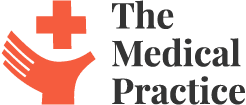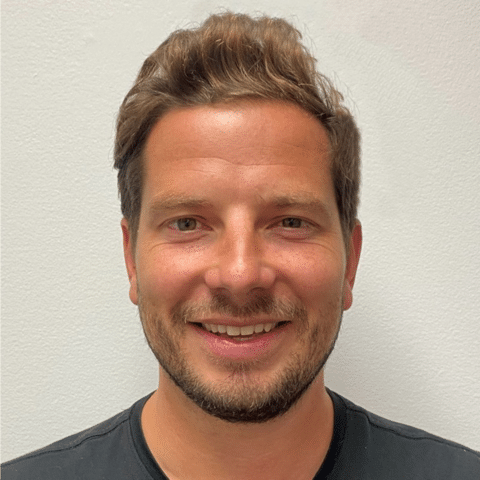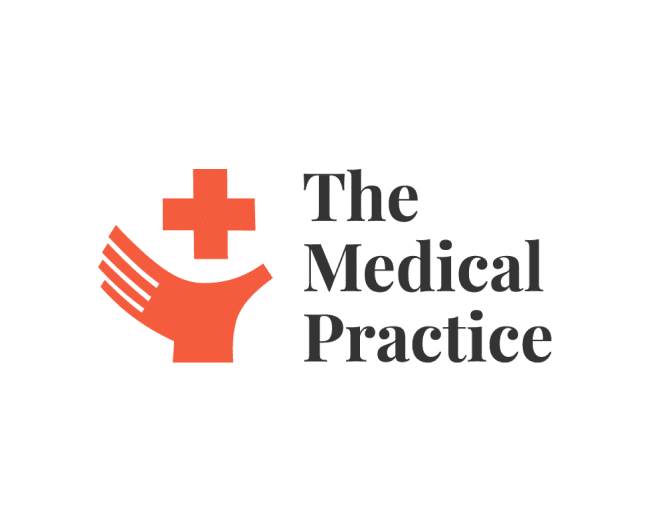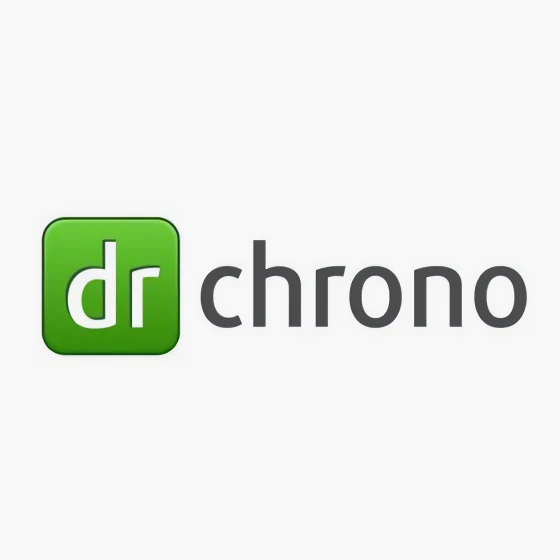10 Best Ophthalmology EHR Shortlist
Here's my pick of the 10 best software from the 23 tools reviewed.
Our one-on-one guidance will help you find the perfect fit.
As a seasoned professional in the field, I understand the intricate needs and challenges of managing an ophthalmology practice. Trust me when I say, adopting the right Electronic Health Records (EHR) system can revolutionize the way you work. These EHRs offer a unified solution for patient data management, billing, coding, scheduling, and much more.
The key pain points these tools address include disorganized patient data, time-consuming administrative tasks, and difficulty complying with ever-evolving healthcare regulations. A well-chosen EHR not only tackles these issues head-on but also offers scalability for your practice's growth and development. I encourage you to check out the options I've curated – you'll undoubtedly find the best automation fit for your unique needs.
Why Trust Our Software Reviews
We’ve been testing and reviewing medical practice software since 2023. As medical practice technology researchers ourselves, we know how critical and difficult it is to make the right decision when selecting software. We invest in deep research to help our audience make better software purchasing decisions.
We’ve tested more than 2,000 tools for different medical practice use cases and written over 1,000 comprehensive software reviews. Learn how we stay transparent & check out our software review methodology.
Best Ophthalmology EHR Summary
| Tool | Best For | Trial Info | Price | ||
|---|---|---|---|---|---|
| 1 | Best for mobile-first ophthalmology workflows | Free demo available | Pricing upon request | Website | |
| 2 | Best for its comprehensive clinical documentation feature | Not available | From $395/user/month. | Website | |
| 3 | Best for comprehensive electronic medical record keeping | Free demo available | From $199/user/month (billed annually) | Website | |
| 4 | Best for robust reporting capabilities | Not available | Quote-based pricing | Website | |
| 5 | Best for user-friendly interfaces | Not available | From $599/user/month | Website | |
| 6 | Best for specialized ophthalmology features | Not available | From $300/user/month (billed annually) | Website | |
| 7 | Best for seamless integration with existing systems | Not available | From $80/user/month (billed annually) | Website | |
| 8 | Best for advanced billing and coding support | Not available | From $279/user/month | Website | |
| 9 | Best for comprehensive practice management | Not available | From $199/user/month | Website | |
| 10 | Best for cloud-based accessibility | Not available | From $199/user/month | Website |
Best Ophthalmology EHR Reviews
NextGen is a comprehensive EHR and practice management solution that supports a wide range of specialties, including ophthalmology. Its platform combines AI-assisted documentation, patient engagement tools, and financial automation in a system designed to scale with growing practices.
Why I Picked NextGen: I picked NextGen for its robust AI documentation capabilities and mobile-first design—two features that can make a big difference in high-volume ophthalmology clinics. Providers can capture SOAP notes using ambient AI, access real-time patient data from mobile devices, and rely on automated referral workflows and billing tools. The system also includes specialty-specific templates and integrations with imaging systems, helping ophthalmologists manage clinical data efficiently without sacrificing speed or accuracy.
Standout Features & Integrations:
Key features include ambient AI-powered note capture, real-time analytics, configurable templates, and patient self-scheduling tools. The system’s Mirth Data Platform supports interoperability with labs and diagnostic imaging tools, while NextGen Share enables secure data exchange with referring providers. Notable integrations include Relaymed, Medsender, Klara, Surgimate, Transform9, CallMyDoc, rater8, Arcadia, and more.
Pros and cons
Pros:
- Strong interoperability tools and vendor ecosystem
- Mobile access with smart documentation shortcuts
- Highly customizable templates for eye care workflows
Cons:
- Mobile app is limited on Android devices
- Ambient AI feature may come with added cost
Best for its comprehensive clinical documentation feature
RevolutionEHR is an HIPAA-compliant ophthalmology-specific software system that combines various practice management features into one unified system. Its strength lies in its comprehensive clinical documentation feature, aiding in creating detailed, structured, and accessible patient health information like demographics and medical history.
Why I Picked RevolutionEHR: In selecting tools for this list, I gave preference to ones that stood out in specific areas. In the case of RevolutionEHR, its advanced clinical documentation feature, designed to streamline and enhance the management of patient records, clearly set it apart. In my view, it's best suited for practices that prioritize thorough and efficient clinical documentation.
Standout Features & Integrations:
RevolutionEHR's standout features include practice management, EHR, billing, and of course, its clinical documentation. It integrates seamlessly with numerous third-party systems, allowing for smooth data exchange and further functionality enhancements.
Pros and cons
Pros:
- Supports multiple integrations
- Comprehensive practice management solution
- Advanced clinical documentation feature
Cons:
- Could have a steep learning curve for users
- May include features not needed by some practices
- Pricing could be high for smaller practices
DrChrono is a comprehensive EHR and practice management software with a focus on seamless electronic medical record keeping. Its extensive feature set makes it an ideal option for healthcare practices that require thorough and detailed patient record management.
Why I Picked DrChrono: In selecting tools for this list, DrChrono emerged as a standout due to its robust EHR capabilities. The extensive electronic medical record keeping feature makes it unique. Hence, I concluded it to be the best for practices that need thorough and in-depth patient record management.
Standout Features & Integrations:
Key features of DrChrono include customizable medical forms, teledentistry capabilities, and patient portal. The platform also integrates smoothly with numerous other software like billing solutions and appointment scheduling apps, contributing to its comprehensive nature.
Pros and cons
Pros:
- Integrations with multiple other tools and software
- Customizable medical forms cater to diverse needs
- Comprehensive electronic medical record keeping
Cons:
- The learning curve may be steep due to the extensive feature set
- Annual billing could be inconvenient for some
- The cost might be prohibitive for smaller practices
ManagementPlus Ophthalmology EHR is a healthcare software solution designed to streamline operations within ophthalmology practices. Its focus lies on providing robust reporting capabilities, thereby enabling practices to gain critical insights from their data.
Why I Picked ManagementPlus Ophthalmology EHR: In my search for the most effective ophthalmology EHR tools, ManagementPlus emerged with a distinct meaningful use due to its strong focus on robust reporting capabilities. The wealth of insightful data it provides, as well as its ability to transform this data into actionable knowledge, places it ahead of many competitors. I concluded that for those seeking comprehensive insights into their practice’s performance, ManagementPlus Ophthalmology EHR would be the best fit.
Standout Features & Integrations:
Alongside its reporting capabilities, ManagementPlus also offers electronic medical records, billing, and practice management features. It also stands out for its ability to integrate with a variety of other systems, including diagnostic equipment, lab services, and third-party accounting systems.
Pros and cons
Pros:
- Wide range of integrations
- Comprehensive feature set including EMR and practice management
- Strong emphasis on robust reporting
Cons:
- Steeper learning curve for new users
- Interface can feel outdated
- Lack of transparent pricing
EyeMD EMR is a well-designed Electronic Health Record (EHR) system, created to specifically cater to the needs of ophthalmologists. It excels in offering a user-friendly interface, making patient data management, scheduling, and other essential tasks straightforward and manageable.
Why I Picked EyeMD EMR: EyeMD EMR caught my attention due to its unique emphasis on providing a user-friendly experience. It offers a simplified and intuitive interface, which can significantly reduce the learning curve and time spent on training, making it best for user-friendly interfaces.
Standout Features & Integrations:
EyeMD EMR brings in valuable features such as a comprehensive EHR, practice management, telemedicine, and patient engagement tools. Its intelligent decision support system can aid in improving clinical decisions. It integrates well with PACS/Imaging, Optical Shop Management, and various Billing Solutions, enhancing its utility for an ophthalmology practice.
Pros and cons
Pros:
- Broad range of integration capabilities
- Comprehensive EHR with intelligent decision support
- User-friendly interface simplifies workflows
Cons:
- Mobile app functionality can be enhanced
- Customization options could be improved
- Pricing is on the higher end of the scale
Accuro is a healthcare-specific EHR solution, boasting a wealth of features that cater specifically to ophthalmology practices. It offers a diverse set of tools that address the specific needs of ophthalmologists, making it an optimal choice for such specialists.
Why I Picked Accuro: I selected Accuro for this list because of its specialized focus on ophthalmology. Unlike many other EHR solutions, Accuro has features specifically designed for ophthalmologists. Because of this, it excels in meeting the unique needs of such practices, making it the 'Best for specialized ophthalmology features.'
Standout Features & Integrations:
Accuro offers features such as digital imaging, advanced scheduling, and automated patient reminders. Additionally, it provides integrations with numerous third-party systems like billing solutions and laboratory information systems, enhancing its overall utility.
Pros and cons
Pros:
- Advanced scheduling capabilities
- Numerous integrations with third-party systems
- Specialized features for ophthalmology practices
Cons:
- May have features that are too specialized for general practice
- Additional setup fees may apply
- High starting price might be a deterrent for smaller practices
Juno EHR system is a powerful tool designed to offer comprehensive solutions for ophthalmology practices. It handles everything from patient data management to scheduling and billing, with a particular focus on integrating seamlessly with existing systems.
Why I Picked Juno: I chose Juno for this list due to its excellent capacity to integrate with current systems within a practice, reducing the hassle of switching over to a new platform. This standout quality makes it an optimal choice, especially for practices seeking an EHR that aligns smoothly with their existing workflows. Hence, it earns my pick as best for seamless integration with existing systems.
Standout Features & Integrations:
Juno offers robust features including EHR, practice management, patient portal, and a scheduling tool. Its medical specialty-specific templates can greatly enhance documentation efficiency. When it comes to integrations, Juno pairs well with various lab and pharmacy networks, billing solutions, and imaging systems, amplifying its functionality and flexibility.
Pros and cons
Pros:
- Specialty-specific templates to ease documentation
- Robust set of features tailored for ophthalmology practices
- Efficient integration with existing systems
Cons:
- Customer service can be improved
- Interface may require a learning curve
- No monthly billing option, only annual
Moyae is an ophthalmology software solution that provides a comprehensive suite of tools to manage clinical and administrative tasks. It excels in delivering advanced support for billing and coding, critical to ensuring efficient and accurate financial operations in a practice.
Why I Picked Moyae: I chose Moyae for this list for its superior features in billing and coding support. In comparing different platforms, Moyae demonstrated the ability to streamline complex financial operations effectively. My judgment is that Moyae is the optimal choice for practices that want to enhance their billing and coding procedures.
Standout Features & Integrations:
Moyae offers a range of notable features like a patient portal, electronic medical records, and robust billing and coding functionalities. Furthermore, Moyae supports integrations with a wide array of third-party applications and systems, enhancing interoperability and seamless data exchange.
Pros and cons
Pros:
- Wide range of integrations
- Comprehensive suite of features
- Strong billing and coding support
Cons:
- Could be complex for smaller practices
- Setup and additional feature costs can increase the price
- Higher cost per user
Medflow is a cloud-based EHR solution designed explicitly with eye care practices in mind. This tool supports a wide range of tasks, from patient record management to scheduling and medical billing, contributing to comprehensive practice management.
Why I Picked Medflow: I selected Medflow for this list because it offers a robust feature set that can significantly enhance the overall management of an optometry practice. Its ability to address multiple aspects of practice management with ease and efficiency is why I regard it as best for comprehensive practice management software.
Standout Features & Integrations:
Medflow offers a patient portal, image management, and telemedicine capabilities as part of its key features. Its advanced patient record system can streamline workflows and enhance the patient experience. Medflow integrates seamlessly with leading practice management systems and optical lab software, extending its functionality to serve practices even better.
Pros and cons
Pros:
- Seamless integration with other software solutions
- Comprehensive feature set for end-to-end practice management
- Customizable to suit practice needs
Cons:
- Initial setup can be time-consuming
- The user interface could be more intuitive
- Higher starting price compared to other cloud-based EHRs
Ophthalmology Cloud is a software platform specifically crafted to support ophthalmology practices. Its cloud-based nature provides users with ease of accessibility from any location, making it a flexible solution for today's dynamic healthcare environment.
Why I Picked Ophthalmology Cloud: I selected Ophthalmology Cloud for this list for its standout ability to offer cloud-based accessibility. Its design allows for easy access to data and resources from any location, which is a crucial consideration for practices aiming for operational flexibility. I determined that for those seeking an accessible and convenient tool, Ophthalmology Cloud presents a compelling choice.
Standout Features & Integrations:
Ophthalmology Cloud features a comprehensive suite of tools for practice management, including electronic health records, billing, and appointment scheduling. Furthermore, it supports integration with numerous other systems and platforms to enhance its functionality and ease-of-use.
Pros and cons
Pros:
- Extensive integration capabilities
- Comprehensive suite of practice management tools
- Exceptional cloud-based accessibility
Cons:
- May be more features than some practices require
- Additional setup fees may apply
- Higher initial price point
Other Ophthalmology EHR Tools
- Nextech
For customizable workflows
- GPN Technologies EdgePro
For data-driven business decision-making
- WINK
For its intuitive and powerful patient scheduler
- Medesk
Good for personalized patient communication tools
- iTrust
Good for integrated billing and coding features
- EHNOTE
Good for robust electronic health record capabilities
- CureMD
Good for comprehensive clinical documentation
- Meditab
Good for multi-specialty medical practices
- Compulink Ophthalmology Advantage
Good for specialized ophthalmology features
- iMedicWare
Good for streamlined patient scheduling
- myCare Integrity
Good for intuitive user interface design
- RevenueXL Ophthalmology EHR
Good for its seamless integration with third-party software
- Doctorsoft
Good for cloud-based accessibility
Ophthalmology EHR Selection Criteria
When selecting the best ophthalmology EHR to include in this list, I considered common buyer needs and pain points like ensuring data accuracy and managing patient flow efficiently. I also used the following framework to keep my evaluation structured and fair:
Core Functionality (25% of total score)
To be considered for inclusion in this list, each solution had to fulfill these common use cases:
- Manage patient records
- Schedule appointments
- Track patient history
- Handle billing and invoicing
- Ensure compliance with regulations
Additional Standout Features (25% of total score)
To help further narrow down the competition, I also looked for unique features, such as:
- Advanced imaging integration
- Customizable workflow templates
- Mobile access for remote consultations
- AI-driven diagnostic tools
- Telemedicine capabilities
Usability (10% of total score)
To get a sense of the usability of each system, I considered the following:
- Intuitive interface design
- Easy navigation
- Minimal training required
- Responsive design for various devices
- Clear and concise user guides
Onboarding (10% of total score)
To evaluate the onboarding experience for each platform, I considered the following:
- Availability of training videos
- Interactive product tours
- Access to chatbots for assistance
- Comprehensive webinars
- Pre-configured templates for quick setup
Customer Support (10% of total score)
To assess each software provider’s customer support services, I considered the following:
- 24/7 support availability
- Multichannel support options
- Access to a dedicated account manager
- Fast response times
- Comprehensive knowledge base
Value For Money (10% of total score)
To evaluate the value for money of each platform, I considered the following:
- Competitive pricing
- Transparent pricing structure
- Flexible subscription plans
- Cost-benefit ratio
- Discounts for long-term commitments
Customer Reviews (10% of total score)
To get a sense of overall customer satisfaction, I considered the following when reading customer reviews:
- Overall satisfaction ratings
- Feedback on customer service
- Ease of use comments
- Value for money perceptions
- Commonly reported issues or bugs
How to Choose Ophthalmology EHR
It’s easy to get bogged down in long feature lists and complex pricing structures. To help you stay focused as you work through your unique software selection process, here’s a checklist of factors to keep in mind:
| Factor | What to Consider |
|---|---|
| Scalability | Can the EHR system grow with your practice? Consider future patient volume and staff expansion. Look for flexible licensing and scalable infrastructure. |
| Integrations | Does it integrate with existing systems like billing or lab results? Check for smooth data exchange and minimal manual entry. |
| Customizability | Can you tailor the EHR to fit your practice’s workflows? Avoid rigid systems that force you to adapt your processes. |
| Ease of use | Is the system intuitive for your team? Prioritize user-friendly interfaces that require minimal training. |
| Implementation and onboarding | How long does it take to set up and train your staff? Seek vendors with clear timelines, training support, and minimal disruption to operations. |
| Cost | What’s the total cost of ownership, including hidden fees? Compare subscription, setup, and maintenance costs. |
| Security safeguards | Are patient data and privacy protected? Ensure compliance with HIPAA and look for robust encryption and access controls. |
| Compliance requirements | Does it meet legal and regulatory standards? Verify adherence to healthcare regulations relevant to your practice. |
What Is Ophthalmology EHR?
Ophthalmology EHR is a specialized electronic health record system designed for eye care practices. These tools are generally used by ophthalmologists, optometrists, and their support staff to manage patient care efficiently. Appointment scheduling, patient record management, and billing capabilities help with daily operations and improve patient outcomes. Overall, these tools enhance the quality and efficiency of eye care services.
Features of Ophthalmology EHR
When selecting ophthalmology EHR, keep an eye out for the following key features:
- Patient record management: Easily organize and access detailed patient information, including medical history and treatment plans, to improve care.
- Appointment scheduling: Simplify booking and managing appointments to reduce no-shows and optimize patient flow.
- Billing and invoicing: Automate billing processes to ensure accurate and timely payments, reducing administrative burden.
- Advanced imaging integration: Incorporate diagnostic images directly into patient records for comprehensive eye care analysis.
- Customizable workflow templates: Tailor the EHR system to match your practice’s specific processes and improve efficiency.
- Telemedicine capabilities: Offer remote consultations to expand access to care and accommodate patient preferences.
- Mobile access: Enable access to EHR from mobile devices for flexibility in managing patient care on the go.
- Compliance with regulations: Ensure adherence to healthcare laws like HIPAA to protect patient data and avoid legal issues.
- AI-driven diagnostic tools: Utilize artificial intelligence to assist in diagnosing conditions and recommending treatment plans.
- Interactive product tours: Provide guided tours to help new users quickly learn the system and maximize its potential.
Benefits of Ophthalmology EHR
Implementing ophthalmology EHR provides several benefits for your team and your business. Here are a few you can look forward to:
- Improved patient care: Access to detailed patient records and diagnostic tools helps provide more accurate and personalized treatment.
- Enhanced efficiency: Features like appointment scheduling and billing automation reduce administrative tasks, allowing your team to focus on patient care.
- Better compliance: Built-in regulatory compliance features ensure you meet legal requirements, protecting patient data and your practice.
- Increased accessibility: Mobile access and telemedicine capabilities enable your team to provide care from anywhere, meeting patient needs more effectively.
- Streamlined workflows: Customizable templates and integration with imaging systems help tailor processes to your practice, boosting productivity.
- Cost savings: Automated billing and efficient scheduling reduce errors and improve resource allocation, leading to financial savings.
- Patient satisfaction: Efficient management and remote consultation options improve the overall patient experience, fostering loyalty and trust.
Costs and Pricing of Ophthalmology EHR
Selecting ophthalmology EHR requires an understanding of the various pricing models and plans available. Costs vary based on features, team size, add-ons, and more. The table below summarizes common plans, their average prices, and typical features included in ophthalmology EHR solutions:
Plan Comparison Table for Ophthalmology EHR
| Plan Type | Average Price | Common Features |
|---|---|---|
| Free Plan | $0 | Basic patient record management, appointment scheduling, and limited support. |
| Personal Plan | $20-$50/user/month | Advanced scheduling, basic billing capabilities, and email support. |
| Business Plan | $50-$100/user/month | Comprehensive patient management, billing automation, and mobile access. |
| Enterprise Plan | $100-$250/user/month | Customizable workflows, AI-driven diagnostics, and dedicated account management. |
Ophthalmology EHR Frequently Asked Questions (FAQs)
What are the benefits of using ophthalmology EHR?
Using ophthalmology EHR provides numerous benefits. It enables more accurate and efficient documentation with the help of specialized all-in-one ophthalmology EMR software templates. Integrated imaging capabilities allow images to be attached directly to the patient’s record, facilitating better clinical decision-making.
E-prescribing features can improve prescription accuracy and efficiency, while a patient portal can enhance patient engagement and communication. Automated billing and coding can simplify the billing process and improve financial health of the practice.
How much do these ophthalmology EHR tools typically cost?
Pricing for ophthalmology EHR software varies widely based on the healthcare provider, the feature set, and the size of the practice. It typically ranges from around $50 to over $500 per user per month.
What are the typical pricing models for ophthalmology EHR software?
Ophthalmology EHR software is typically sold as a subscription service, charged on a per user, per month basis. Some vendors also offer a perpetual license model where you pay a one-time fee for the software. This may be accompanied by an annual maintenance fee for updates and web-based support.
What is the range of pricing for these tools?
The pricing for ophthalmology EHR tools can start as low as $50 per user per month for basic packages, going up to more than $500 per user per month for comprehensive solutions that include advanced features such as integrated imaging, advanced analytics, and interoperability capabilities.
Which are the cheapest and most expensive ophthalmology EHR software?
Prices for standalone EHR software can vary greatly, and it is often difficult to determine the cheapest and most expensive options because the total cost will depend on the specific needs and size of the practice. However, some of the lower-priced options include NextGen and EHNote, while high-end providers include Meditab and iMedicWare.
Are there any free ophthalmology EHR options?
Most EHR vendors do not offer completely free options because of the complexity of the systems and the costs associated with maintaining them. However, some may offer a free trial or a very basic free version with limited features. It’s also worth noting that there are government incentives available in some regions that can help offset the cost of implementing an EHR system.
What’s Next:
If you're in the process of researching ophthalmology EHR, connect with a SoftwareSelect advisor for free recommendations.
You fill out a form and have a quick chat where they get into the specifics of your needs. Then you'll get a shortlist of software to review. They'll even support you through the entire buying process, including price negotiations.halmology community. Your contribution can help others make an informed decision.

























